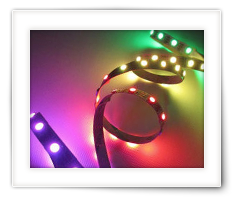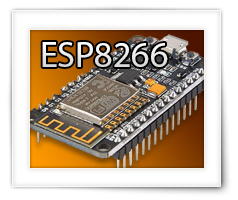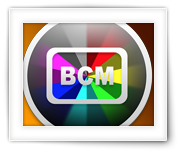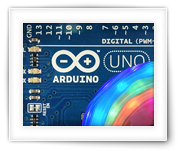Having been tinkering with LED strips for quite some years now, I do occasionally get the question: “What do the IP ratings mean?”.
There is a short answer for that question: It indicates its protection level against water and dust.
Obviously this doesn’t say much, and things are a little more advanced that that.
So in this article I’ll go briefly into the details on what kind of IP ratings you can run into and what they mean.
This way you can consider in what kind of environment you’d like to use your LED strip and find a matching IP code.
Ad Blocking Detected Please consider disabling your ad blocker for our website.
We rely on these ads to be able to run our website.
You can of course support us in other ways (see Support Us on the left).
In this article, I’ll show you how I did get started with an ESP8266, as a replacement for an Arduino, and they are dirt cheap!
The ESP8266, appears to have been sold as a shield for an Arduino, to provide WiFi functionality to an Arduino. Pretty cool!
But what is even cooler: For most applications you do not even need an Arduino, as the ESP8266 can run as a standalone microcontroller with WiFi on board, and is even more capable than most Arduinos.
This may sound odd, but after my first experiences with the ESP8266;
I’m beginning to wonder how often I’ll be using my Arduino Uno in the future. The little ESP8266 is so cool, faster, more powerful, and has more memory, at a ridiculous price of about $5. And all this in a smaller package with WiFi included!
If you’ve read the article I wrote a while ago “LEDStrip effects for NeoPixel and FastLED“, then you might have noticed quite a few requests to combine all these effects in one single sketch.
I have seen some users come up with some nice examples, but the challenge remained (for me): how do I instantly toggle from effect to another?
Well, today I’ll have such a sketch available for you; it allows you toggle between effects with a simple switch.
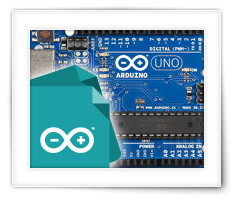
We have learnt quite a bit in the past 8 chapters. In this ninth chapter we will start we will combine some of the things we’ve talked about and with that show you how we can read something from the Serial Monitor of the Arduino IDE, so a user can enter text or numbers.
This is the ninth part of a series of articles I’ve written to get beginners started with Arduino Programming in the programming language C, which I’ve written with the intend to teach my 13 year old nephew (Bram) to get started with the Arduino. After all, he wants to build a robot, but without some basic knowledge about programming, he won’t get far ….
Besides an introduction into the language C, the default language used for Arduino Programming, “Arduino Programming for Beginners” will also touch topics like how to setup an Arduino, get a developers environment running, and look at a few basic electronic parts which we connect to our Arduino.
Ad Blocking Detected Please consider disabling your ad blocker for our website.
We rely on these ads to be able to run our website.
You can of course support us in other ways (see Support Us on the left).
In this eight “chapter” of our articles on how to do Arduino Programming for beginners, we will take a look at arrays – what they are and how we can work with them.
This is the eight part of a series of articles I’ve written to get beginners started with Arduino Programming in the programming language C, which I’ve written with the intend to teach my 13 year old nephew (Bram) to get started with the Arduino. After all, he wants to build a robot, but without some basic knowledge about programming, he won’t get far ….
Besides an introduction into the language C, the default language used for Arduino Programming, “Arduino Programming for Beginners” will also touch topics like how to setup an Arduino, get a developers environment running, and look at a few basic electronic parts which we connect to our Arduino.

In this seventh installment of our articles on how to do Arduino Programming for beginners, we will take a look at working with text, or “strings”. So far we have worked with numbers and booleans, and touched on strings even though you might not have noticed it. In this article we will dig into strings, how they work and what we can do with them.
This is the seventh part of a series of articles I’ve written to get beginners started with Arduino Programming in the programming language C, which I’ve written with the intend to teach my 13 year old nephew (Bram) to get started with the Arduino. After all, he wants to build a robot, but without some basic knowledge about programming, he won’t get far ….
Besides an introduction into the language C, the default language used for Arduino Programming, “Arduino Programming for Beginners” will also touch topics like how to setup an Arduino, get a developers environment running, and look at a few basic electronic parts which we connect to our Arduino.

In this article we will talk about Functions. In previous parts we have worked with two functions already (setup and loop), but in this part we will go deeper into using functions and creating our own.
This is the sixth part of a series of articles I’ve written to get beginners started with Arduino Programming in the programming language C, which I’ve written with the intend to teach my 13 year old nephew (Bram) to get started with the Arduino. After all, he wants to build a robot, but without some basic knowledge about programming, he won’t get far ….
Besides an introduction into the language C, the default language used for Arduino Programming, “Arduino Programming for Beginners” will also touch topics like how to setup an Arduino, get a developers environment running, and look at a few basic electronic parts which we connect to our Arduino.
Ad Blocking Detected Please consider disabling your ad blocker for our website.
We rely on these ads to be able to run our website.
You can of course support us in other ways (see Support Us on the left).
This article just presents the entire content overview of the mini course “Arduino Programming for Beginners” which I wrote for my nephews Bram and Max.
Originally I had placed the full overview with each chapter, but since that list became rather long, I decided to only show an overview of a given chapter with that give chapter.
So on this page an overview of all chapters and paragraphs of the “course”.
In this article we will talk about loops. Loops are used for going through programming instructions for a defined or undefined number of times, so that we do not have to write the same statement over and over again. We will look at “for”-loops, “while”-loops and “do … while …”-loops.
This is the fifth part of a series of articles I’ve written to get beginners started with Arduino Programming in the programming language C, which I’ve written with the intend to teach my 13 year old nephew (Bram) to get started with the Arduino. After all, he wants to build a robot, but without some basic knowledge about programming, he won’t get far ….
Besides an introduction into the language C, the default language used for Arduino Programming, “Arduino Programming for Beginners” will also touch topics like how to setup an Arduino, get a developers environment running, and look at a few basic electronic parts which we connect to our Arduino.

In this article we will talk about making decisions (if … then … or switch … case …). Decisions are very important in our program to react to changing data or events, or to go through a list (loop) of data or events. We call that Control Flow – meaning code is being executed in a different order based on conditions.
This is the fourth part of a series of articles I’ve written to get beginners started with Arduino Programming in the programming language C, which I’ve written with the intend to teach my 13 year old nephew (Bram) to get started with the Arduino. After all, he wants to build a robot, but without some basic knowledge about programming, he won’t get far ….
Besides an introduction into the language C, the default language used for Arduino Programming, “Arduino Programming for Beginners” will also touch topics like how to setup an Arduino, get a developers environment running, and look at a few basic electronic parts which we connect to our Arduino.
Ad Blocking Detected Please consider disabling your ad blocker for our website.
We rely on these ads to be able to run our website.
You can of course support us in other ways (see Support Us on the left).
In this article we will talk about “data”, after all, a computer can do pretty much only one thing: handle data in a way we dictate. For this we need what is called “data types”, “variables” and “constants”.
This is the third part of a series of articles I’ve written to get beginners started with Arduino Programming in the programming language C, which I’ve written with the intend to teach my 13 year old nephew (Bram) to get started with the Arduino. After all, he wants to build a robot, but without some basic knowledge about programming, he won’t get far ….
Besides an introduction into the language C, the default language used for Arduino Programming, “Arduino Programming for Beginners” will also touch topics like how to setup an Arduino, get a developers environment running, and look at a few basic electronic parts which we connect to our Arduino.
In this article we will go a little deeper into Arduino Programming, by exploring the developer tools, also knows as the Arduino IDE and how we can output information of the Arduino to our computer.
This is the second part of a series of articles I’ve written to get beginners started with Arduino Programming in the programming language C, which I’ve written with the intend to teach my 13 year old nephew (Bram) to get started with the Arduino. After all, he wants to build a robot, but without some basic knowledge about programming, he won’t get far ….
Besides an introduction into the language C, the default language used for Arduino Programming, “Arduino Programming for Beginners” will also touch topics like how to setup an Arduino, get a developers environment running, and look at a few basic electronic parts which we connect to our Arduino.

This is the first part of a series of articles I’ve written to get beginners started with Arduino Programming in the programming language C, which I’ve written with the intend to teach my 13 year old nephew Bram Knuit (and his 10 year old brother Max Knuit) to get started with the Arduino. After all, he wants to build a robot, but without some basic knowledge about programming, he won’t get very far ….
In this article we will show you how to get started with our little Arduino Programming course, by selecting an Arduino and setup the developer tools so we can actually try some of the examples that will be discussing in the next chapters.
Besides an introduction into the language C, the default language used for Arduino Programming, “Arduino Programming for Beginners” will also touch topics like how to setup an Arduino, get a developers environment running, and look at a few basic electronic parts which we connect to our Arduino. The lack of basic knowledge should hopefully not be a problem … so I’ll be trying to keep everyone in mind.
Ad Blocking Detected Please consider disabling your ad blocker for our website.
We rely on these ads to be able to run our website.
You can of course support us in other ways (see Support Us on the left).
After many iterations of Boblight Config Maker, I’ve decided to finally release v2 … keep in mind that I have the feeling it’s not quite finished yet, so it’s released as a beta, by request of many v1 users.
V2 has been rebuild complete from scratch, and (in my opinion) is not been quite perfect yet, but some will see benefit in this version as it adds a lot of new features.
Since building and maintaining this application is simply taking way too much time, this will, unfortunately, most likely be the last version as well. As with many free or open source projects, this project is taking just too much time, and unfortunately, I do have to make a living as well.
Note that for now the source will not be made public.
UPDATE: For Windows and MacOS X I have fixed several bugs, a new version (beta 3) is available.
For those who have read the article “Arduino – Controlling a WS2812 LED strand with NeoPixel or FastLED” might have gotten infected by urge to get more effects, after all … some of these LEDStrip effects look pretty slick!
With the holiday coming up real soon, I figured this would be a great opportunity to create and post some cool effects for your LED strips. Maybe you can be your own Griswold (National Lampoon’s Christmas Vacation) with these! 
You’ve got to check out the Fire effect with toilet paper – looks pretty cool!
Please read the article Arduino – Controlling a WS2812 LED first, as it will show you some of the basics.
Also note that you’re invited to post your own effects or ideas in the comment section or in the Arduino/WS2811/WS2812 – Share you lighting effects and patterns here … forum topic.

